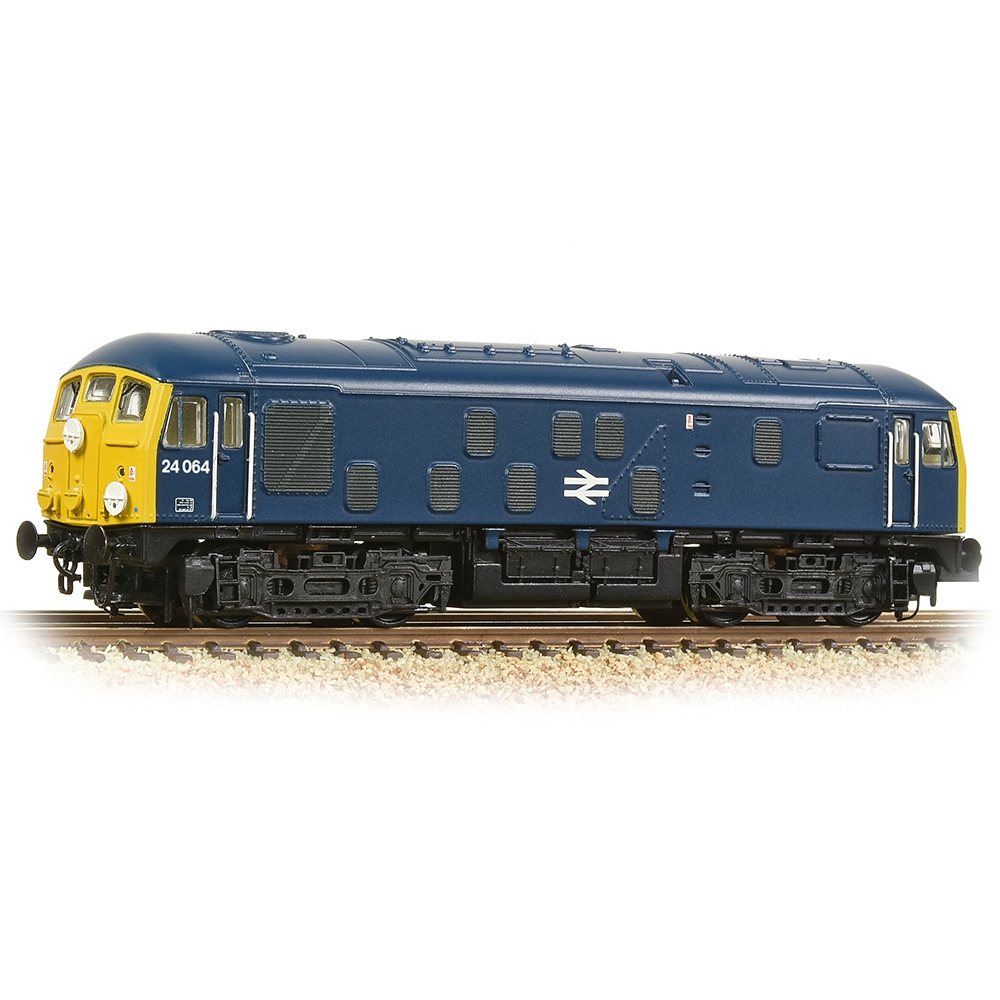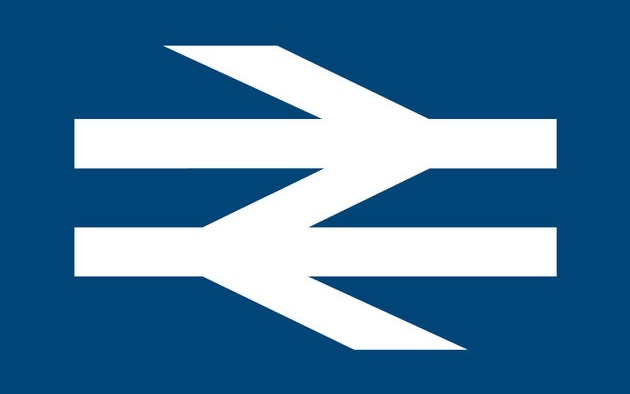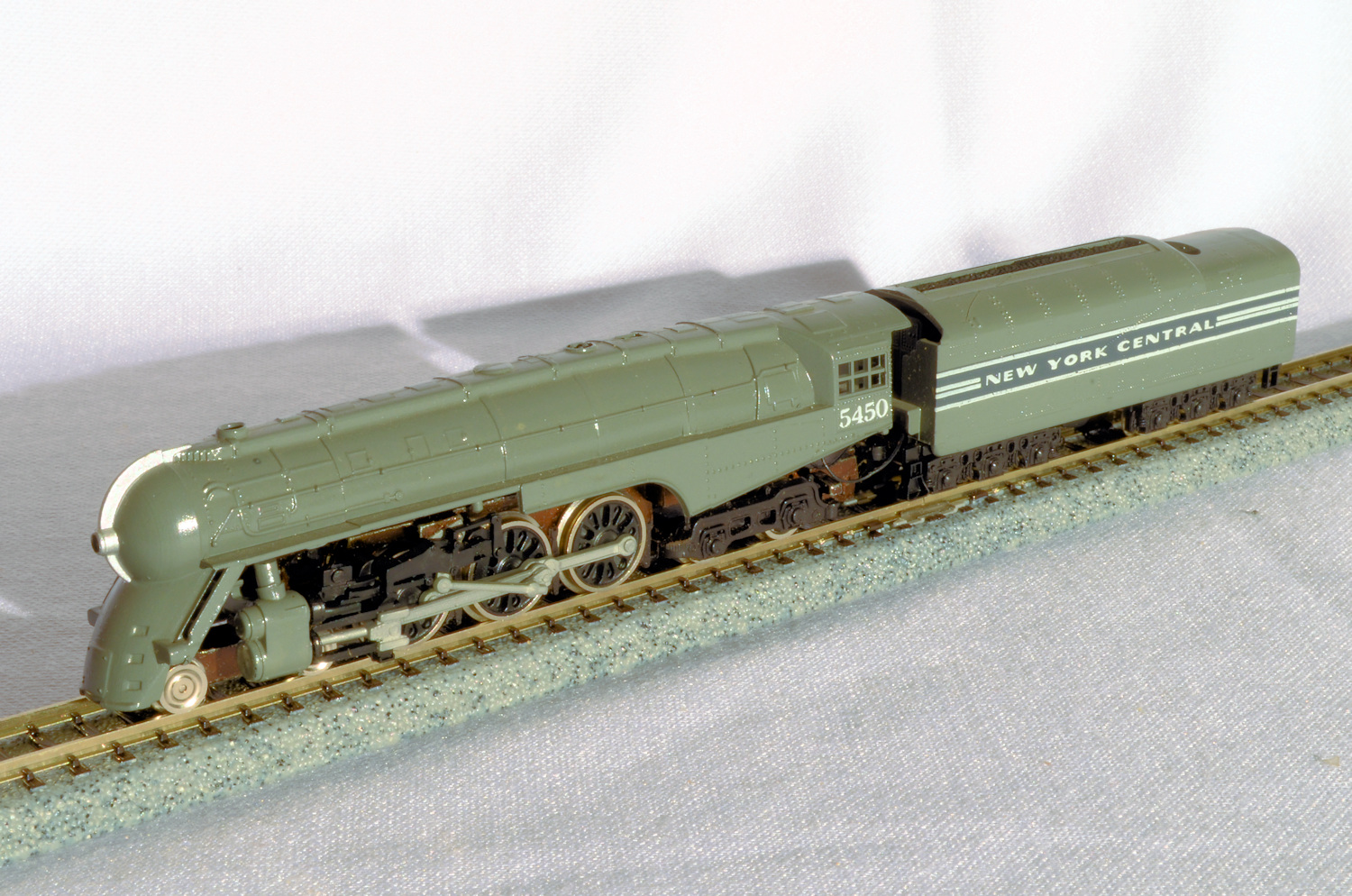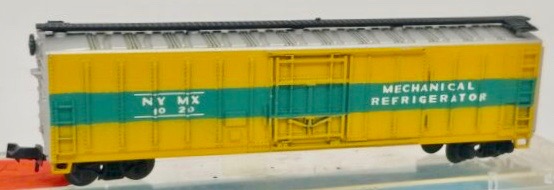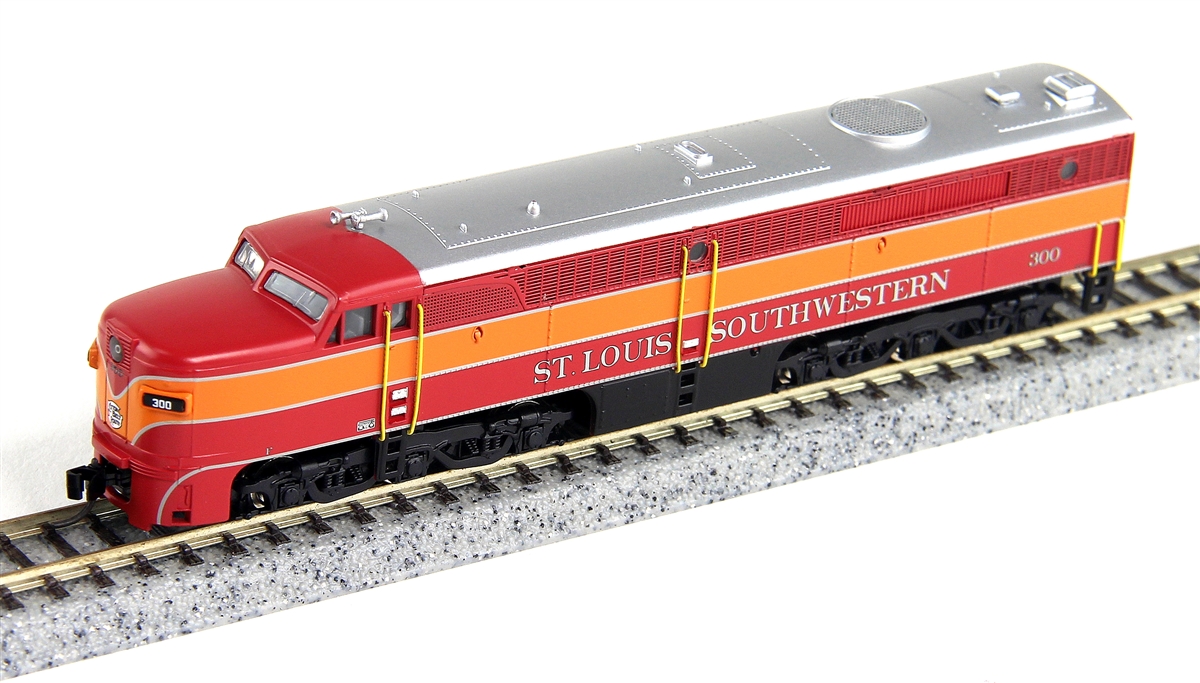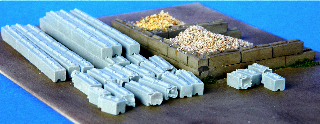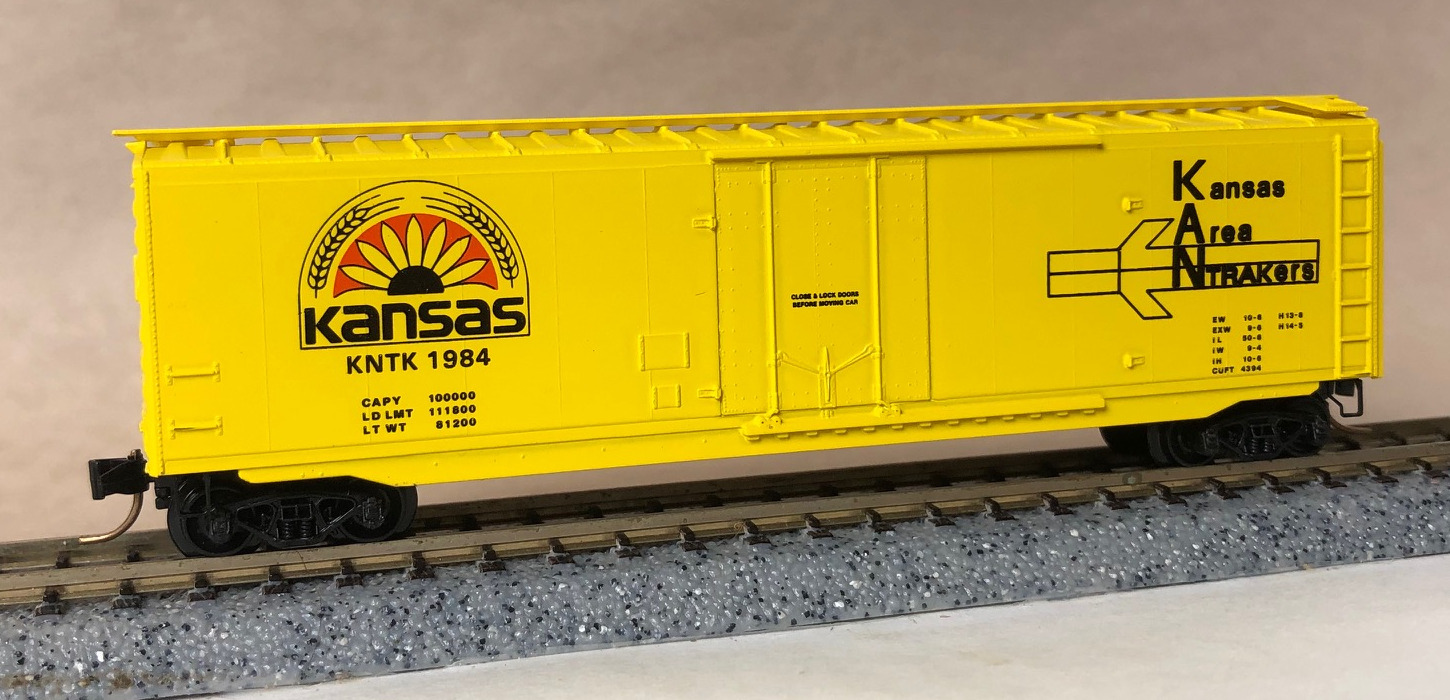Specific Item Information: The widely travelled British Railways Class 24 diesel locomotives, also known as the Sulzer Type 2, were built from 1958 to 1961. One hundred and fifty-one were built at Derby, Crewe and Darlington, the first twenty of them as part of the British Railways 1955 Modernisation Plan. This class was used as the basis for the development of the class 25 locomotives. The final survivor, no. 24081, was withdrawn from Crewe depot in 1980. Four class members are preserved.
Initial deliveries were for operation in the Crewe and Derby areas, but fifteen of the initial twenty were diverted for use on the Southern Region to cover for delays in the Kent Coast Electrification scheme. As deliveries continued allocations were made to both the London Midland Region and Eastern Region, and with the class becoming familiar to crews and staff around London they were used on freight trains over the Metropolitan Widened Lines. Locos allocated to East Anglia for use on freight soon became redundant due to the rundown of freight in that region, and these were, in turn, moved to Wales and Lancashire.
Class 24s took over the 'Condor' fast freight service between London (Hendon) and Glasgow (Gushetfaulds) in 1961. Thus the class was also used when a second "Condor" fast overnight freight service was introduced, running from Aston to Glasgow. These were the usual motive power from its introduction on 17 January 1963 when D5082 hauled the Down train and D5083 the up train until replaced by the first Freightliner service in 1965.
The batch D5096–D5113 were all allocated to Gateshead depot in 1966 to replace 9F steam locos on the Tyne Dock to Consett iron ore trains. These workings used a special design of bogie hopper wagon, and these locos had an additional compressor and associated pipework. These workings, typically with loads of around 1,000 tons, were double-headed and continued until taken over by Class 37s in the 1970s, when these locos were reallocated to Scottish depots.
Initial deliveries were for operation in the Crewe and Derby areas, but fifteen of the initial twenty were diverted for use on the Southern Region to cover for delays in the Kent Coast Electrification scheme. As deliveries continued allocations were made to both the London Midland Region and Eastern Region, and with the class becoming familiar to crews and staff around London they were used on freight trains over the Metropolitan Widened Lines. Locos allocated to East Anglia for use on freight soon became redundant due to the rundown of freight in that region, and these were, in turn, moved to Wales and Lancashire.
Class 24s took over the 'Condor' fast freight service between London (Hendon) and Glasgow (Gushetfaulds) in 1961. Thus the class was also used when a second "Condor" fast overnight freight service was introduced, running from Aston to Glasgow. These were the usual motive power from its introduction on 17 January 1963 when D5082 hauled the Down train and D5083 the up train until replaced by the first Freightliner service in 1965.
The batch D5096–D5113 were all allocated to Gateshead depot in 1966 to replace 9F steam locos on the Tyne Dock to Consett iron ore trains. These workings used a special design of bogie hopper wagon, and these locos had an additional compressor and associated pipework. These workings, typically with loads of around 1,000 tons, were double-headed and continued until taken over by Class 37s in the 1970s, when these locos were reallocated to Scottish depots.
Road Name History: British Railways (BR), which from 1965 traded as British Rail, was the state-owned company that operated most of the overground rail transport in Great Britain between 1948 and 1997. It was formed from the nationalisation of the "Big Four" British railway companies and lasted until the gradual privatisation of British Rail, in stages between 1994 and 1997. Originally a trading brand of the Railway Executive of the British Transport Commission, it became an independent statutory corporation in 1962 designated as the British Railways Board.
British Rail designed and manufactured rolling stock from 1948 to 1989, at which time its subsidiary British Rail Engineering Limited (BREL) was privatised.
1997 marked the end of the privatization effort in which the last assets of British Rail were sold to 31 regional freight and passenger operators as well as Railtrack (which was later brought under public control as Network Rail), which was given the track and infrastructure.
Read more on Wikipedia.
British Rail designed and manufactured rolling stock from 1948 to 1989, at which time its subsidiary British Rail Engineering Limited (BREL) was privatised.
1997 marked the end of the privatization effort in which the last assets of British Rail were sold to 31 regional freight and passenger operators as well as Railtrack (which was later brought under public control as Network Rail), which was given the track and infrastructure.
Read more on Wikipedia.
Brand/Importer Information: Graham Farish is a British brand of N gauge model trains, that belongs to Bachmann Europe.
The company entered the model train business in the early 1950s, focusing on British OO gauge rolling stock, track and accessories.
In the 1970s, it started to produce N gauge models under the GRAFAR label. After the withdrawal of Lima and Minitrix from the UK market in the late 1980s, Graham Farish was the only major supplier of British outline models in N gauge, soon withdrawing from the OO scale market.
In 2001, Graham Farish was purchased by Kader Industries of Hong Kong, and absorbed by its subsidiary Bachmann Industries. Bachmann immediately closed the British manufacturing facility and moved production to China.
Bachmann have since increased the size of the Farish range, by duplicating models introduced to the Bachmann OO range; often, an OO scale Bachmann Branchline model is followed between 6 months to a year later by an N gauge Graham Farish model.
The company entered the model train business in the early 1950s, focusing on British OO gauge rolling stock, track and accessories.
In the 1970s, it started to produce N gauge models under the GRAFAR label. After the withdrawal of Lima and Minitrix from the UK market in the late 1980s, Graham Farish was the only major supplier of British outline models in N gauge, soon withdrawing from the OO scale market.
In 2001, Graham Farish was purchased by Kader Industries of Hong Kong, and absorbed by its subsidiary Bachmann Industries. Bachmann immediately closed the British manufacturing facility and moved production to China.
Bachmann have since increased the size of the Farish range, by duplicating models introduced to the Bachmann OO range; often, an OO scale Bachmann Branchline model is followed between 6 months to a year later by an N gauge Graham Farish model.
Manufacturer Information: Bachmann, a US company founded in 1835, was purchased by Kader Industries in 1987. Kader formed Bachmann Industries Europe in 1989 with their main UK headquarters in Moat Way, Barwell, Leicestershire, UK (former Palitoy location) and the following year launched the Bachmann Branchline range for the British market with the moulds that had previously been used for the Palitoy Mainline and Replica Railways model railway products. From this starting point Bachmann has developed the range further and now produce a large range of models.
In 2001 Bachmann Branchline bought Graham Farish, an N gauge manufacturer, and since then many of their models have been made available in both gauges.
Bachmann Europe portfolio also comprises other model trains brands such as Liliput.
In 2001 Bachmann Branchline bought Graham Farish, an N gauge manufacturer, and since then many of their models have been made available in both gauges.
Bachmann Europe portfolio also comprises other model trains brands such as Liliput.
Item created by: CNW400 on 2022-03-18 15:28:52
If you see errors or missing data in this entry, please feel free to log in and edit it. Anyone with a Gmail account can log in instantly.
If you see errors or missing data in this entry, please feel free to log in and edit it. Anyone with a Gmail account can log in instantly.


